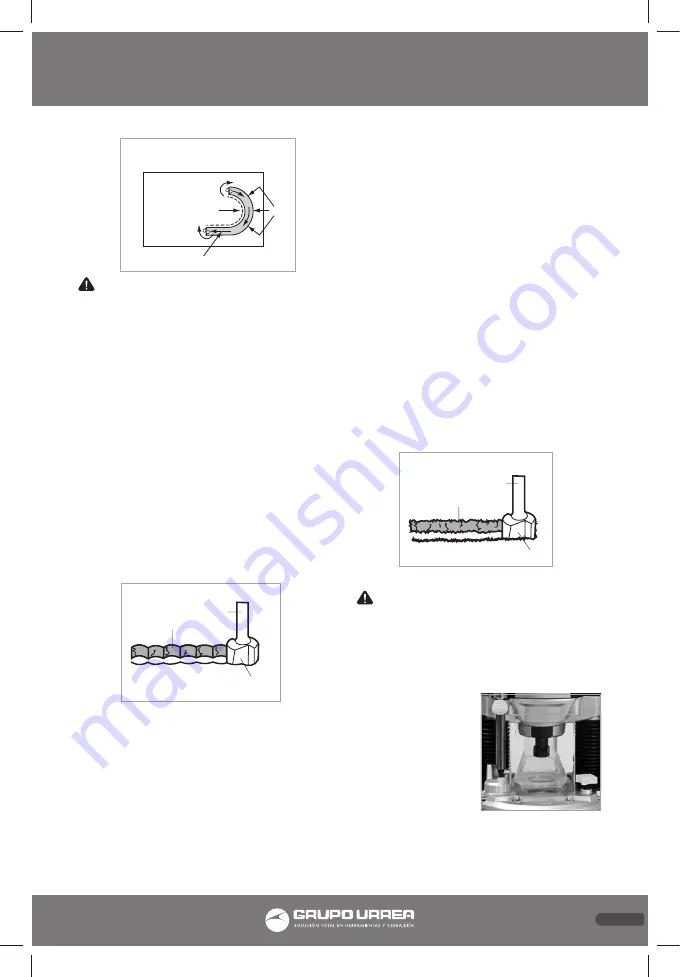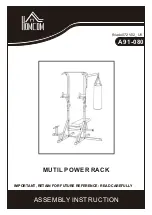
25
E N G L I S H •
User's manual
WARNING: Always securely clamp the work
piece in place, and keep a firm grip on the
router base with both hands at all times. Fail-
ure to do so could result in loss of control caus-
ing possible serious personal injury.
RATE OF FEED
The proper rate of feed depends on several
factors: the hardness and moisture content of
the work piece, the depth of cut, and the cut-
ting diameter of the bit. When cutting shallow
grooves in soft woods such as pine, you may
use a faster rate of feed. When making deep
cuts in hardwoods such as oak, you should use
a slower rate of feed.
FEEDING TOO RAPIDLY (FIG. 7)
Clean and smooth finished cuts can only be
achieved when the cutting bit is rotating at
a relatively high speed and taking very small
bites, producing tiny, clean-cut chips.
Forcing the feed of the cutting bit forward too
rapidly slows the RPM of the cutting bit, and
the bit takes larger bites as it rotates. Larger
bites mean larger chips and a rough finish. This
forcing action can also cause the router motor
to overheat. Under extreme force-feeding con-
ditions, the RPMs can become so slow and the
bites become so large that chips become par-
tially cut off, causing splintering and gouging
of the work piece.
The router will make clean, smooth cuts if it
is allowed to run freely without the overload
of forced feeding. You can detect forced feed-
ing by the sound of the motor. Its usual high-
pitched whine will sound lower and stronger
as it loses speed. Holding the router against
the work piece will also be more difficult to do.
FEEDING TOO SLOWLY (FIG. 8)
When you feed the cutting bit too slowly, the
rotating cutting bit does not cut into new
wood rapidly enough to take a bite. Instead, it
scrapes away sawdust-like particles. This scrap-
ing produces heat, which can glaze burn, and
mar the cut in the work piece and, in extreme
cases, overheat the cutting bit. When the cut-
ting bit Is scraping instead of cutting, the rout-
er is more difficult to control as you feed it.
With almost no load on the motor, the cutting
bit has a tendency to bounce off the sides of
the cut in the work piece, producing a cut with
a rippled finish instead of clean, straight sides.
CHIP SHIELDS
WARNING: Always turn the router motor off
and unplug the router from its power source
before making any adjustments or installing
accessories. Failure to turn the router motor
off and unplug the router could result in ac-
cidental starting, which can cause serious per-
sonal injury.
To remove the chip
shield from the base,
press inward on the
tabs until the chip
shield releases from
the base and remove
the chip shield. To at-
tach, place chip shield
in position, and flex
sides while pushing it in until it snaps back into
place.
FIG. 8
Bit Shank
Cut
TOO SLOW
Cutter
FIG. 6
Guide Inside
Bit Rotation
Bit Rotation
Router Feed Direction
Guide
Thrust
FIG. 7
Bit Shank
Cut
TOO FAST
Cutter




































